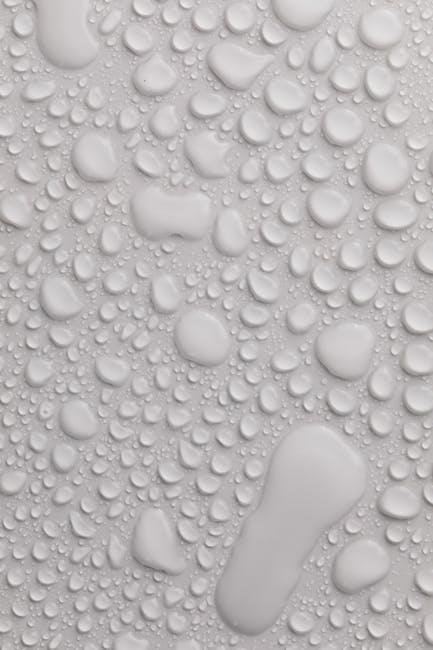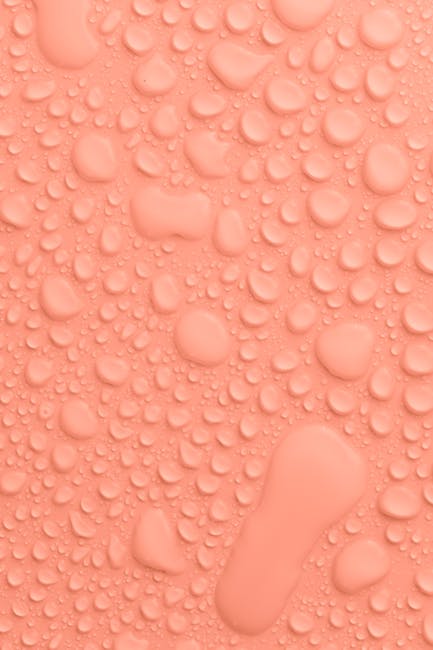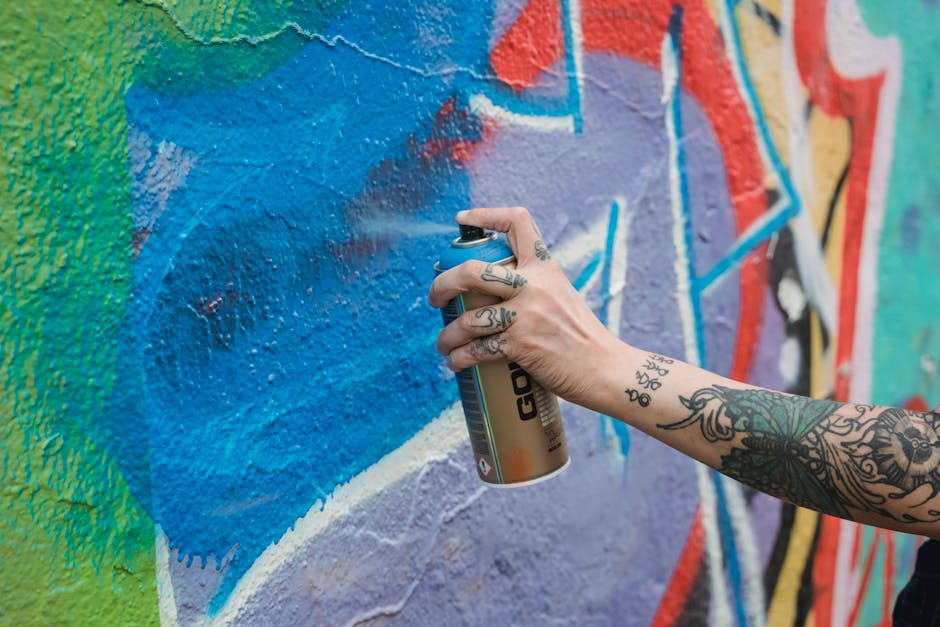
Have you ever stopped to ponder the profound psychological impact of the color of your morning cereal box? Or the menacing aura exuded by an all-black branding campaign? Fear not, dear reader, for we are about to plunge headfirst into the kaleidoscopic world of color psychology in logo design. Join us as we decode the secret language of hues, shades, and tints, and uncover the hidden messages lurking beneath the surface of your favorite brands’ logos. So grab your trusty color wheel and prepare for a wild ride through the rainbow-infused wilderness of the marketing universe!
Understanding the Role of Color in Branding
Color plays a crucial role in branding, so it’s important to understand how different hues can convey the right message about your company. Here are some key points to keep in mind:
- Emotional Impact: Colors can evoke different emotions and associations, so choose wisely. For example, red may evoke feelings of passion and energy, while blue can convey trust and professionalism.
- Consistency is Key: Once you’ve selected a color palette for your brand, stick with it. Consistent use of colors helps to build brand recognition and trust with your audience.
- Stand Out in the Crowd: Use color strategically to differentiate your brand from competitors. A unique color scheme can help your brand be memorable and easily recognized.
Overall, the right color choices can help to communicate your brand’s personality and values effectively. So, don’t underestimate the power of color in branding – it’s more than just a pretty hue on a logo!

Choosing the Right Color Palette for Logo Design
When it comes to choosing the perfect color palette for your logo design, it’s not just about picking your favorite colors or using the ones that are “in” right now (looking at you, millennial pink). A good logo needs to speak to your brand identity, so it’s important to choose colors that reflect your message and personality. Here are some tips to help you navigate the rainbow of options:
First things first, consider your target audience. Are you appealing to world-weary millennials? Try some sophisticated neutrals with a pop of metallic. Marketing to social media-savvy Gen Z? Unleash the neon brights and bold primaries. And if your target audience is literally everyone in the world, well, good luck with that.
Next, think about color psychology. Yes, it’s a real thing. Certain colors can evoke specific emotions and associations, so choose wisely. Does your brand want to convey trustworthiness? Go for a classic navy blue. Want to exude energy and excitement? Slap some fiery red on that logo. And if you just want people to think you’re chill and laid back, hey, man, go for some calming greens and blues.
Don’t forget about contrast and readability. Sure, that electric lime green might look rad on screen, but will it be legible when shrunk down to the size of a postage stamp? Make sure your colors play nice together and won’t cause your logo to disappear into the void of design oblivion. And remember, bold choices can make a statement, but sometimes subtlety is key. It’s like they always say, “It’s not the size of your logo, it’s how you use it.”
The Psychology Behind Color Choices
Have you ever wondered why you always seem to gravitate towards a certain color when choosing clothes, decorating your home, or even picking out a new car? Well, it turns out there’s actually a fascinating field of psychology that explains why we make the color choices that we do!
So, what exactly is it about colors that makes us so obsessed? Let’s break it down:
- Emotional Responses: Different colors can evoke different emotions in people. For example, red is often associated with passion and energy, while blue is calming and serene. So next time you’re feeling stressed, maybe try surrounding yourself with some calming blue hues!
- Cultural Influences: Believe it or not, the colors that we’re attracted to can be influenced by our cultural backgrounds. For example, in Western cultures, white is often associated with purity and weddings, while in some Eastern cultures, it’s the color of mourning.
- Personal Preferences: Of course, at the end of the day, it all comes down to personal preference. Maybe you love wearing bright, bold colors because they make you feel confident, or maybe you prefer soft pastels because they make you feel cozy and relaxed.

Impact of Color on Consumer Behavior
Color plays a crucial role in influencing consumer behavior. It’s like the Jedi mind trick of the marketing world – you may not even realize it, but it’s working its magic on you! Here are some ways color can impact your shopping decisions:
- Red: This fiery hue is often associated with love and passion, but it also has the power to increase your heart rate and create a sense of urgency. That’s why you’ll often see red on sale signs or in fast-food logos – they want you to act fast!
- Blue: Ah, the color of tranquility and trust. It’s no wonder that many banks and tech companies use blue in their branding. You can practically hear them whispering, “Relax, we’ve got this under control.”
- Yellow: This sunny shade is all about happiness and optimism. That’s why you’ll often find it in the logos of brands that want to exude a sense of joy, like McDonald’s or Ikea. They want you to feel warm and fuzzy inside (and maybe hungry for some Swedish meatballs).
So next time you’re out shopping, pay attention to the colors around you. They’re not just pretty decorations – they’re subtle tools working behind the scenes to influence your every move. And who knows, maybe you’ll start seeing the world in a whole new technicolor light!

Using Color to Communicate Brand Values
Looking to give your brand a fresh new look? Why not use the power of color to communicate your brand values in a fun and exciting way! Colors aren’t just pretty to look at – they have the power to convey messages and emotions that words just can’t. Here are some tips to help you make the most of color in your branding:
When choosing colors for your brand, consider what emotions you want to evoke in your audience. Are you going for a bold and exciting vibe, or a calm and peaceful one? Use bold and vibrant colors like red and orange to grab attention, or opt for softer hues like blue and green for a more soothing feel.
Don’t be afraid to get creative with your color choices – think outside the box and choose unexpected color combinations that will make your brand stand out from the crowd. Who says you can’t use neon pink and electric blue together? Embrace your inner rebel and go for it!
Remember, consistency is key when it comes to using color in branding. Make sure to use the same colors across all your marketing materials, from your logo to your website to your social media posts. This will help create a cohesive and recognizable brand image that will stick in people’s minds long after they’ve seen it.
Case Studies: Effective Use of Color in Logo Design
Color is a powerful tool in logo design, capable of communicating a brand’s personality and values in an instant. Let’s take a look at some case studies of brands that have nailed the use of color in their logos:
Coca-Cola: The iconic red and white color scheme of Coca-Cola’s logo is instantly recognizable around the world. The bold red evokes energy and excitement, while the classic white adds a sense of purity and simplicity. Together, these colors create a timeless and memorable logo that has stood the test of time.
McDonald’s: The golden arches of McDonald’s logo are synonymous with fast food and good times. The vibrant red and yellow color combination is designed to stimulate appetite and convey a sense of warmth and happiness. It’s no wonder that seeing those golden arches makes us crave a Big Mac!
Starbucks: The green and white color palette of the Starbucks logo is a perfect reflection of the brand’s commitment to sustainability and quality. The calming green represents growth and harmony, while the clean white background adds a touch of elegance. It’s like a little slice of zen every time you take a sip of your latte.
FAQs
Why are certain colors chosen for logos over others?
Well, it’s not because they look pretty, that’s for sure! Each color actually has its own psychological impact on consumers. For example, red can evoke feelings of passion and excitement, while blue is often associated with trust and professionalism. So, when choosing colors for a logo, designers are trying to evoke specific emotions and perceptions.
Is there a specific color that works best for all logos?
Oh, if only it were that easy! Unfortunately, there’s no one-size-fits-all answer when it comes to logo colors. It really depends on the brand’s industry, target audience, and overall messaging. So, while blue might work well for a financial institution, it might not be the best choice for a trendy clothing brand.
Can using multiple colors in a logo be effective or is it better to stick to one?
Ah, the age-old question: to rainbow or not to rainbow? Using multiple colors can be a great way to show diversity and variety within a brand. However, it can also get a bit messy if not done right. So, if you’re going for a multi-color logo, just make sure the colors work well together and don’t clash like a bad outfit.
Do cultural differences play a role in how colors are perceived in logo design?
Absolutely! What might be seen as lucky in one country could be a symbol of death in another. So, when designing a logo for a global brand, it’s important to consider how different cultures perceive colors. You don’t want to accidentally offend your target audience by using a color that has a negative connotation in their culture.
Can changing the color of a logo really have an impact on a company’s success?
Well, let’s just say that color psychology is no joke! Studies have shown that a simple color change can have a significant impact on consumer perception and even brand recognition. So, if your logo isn’t resonating with your target audience, maybe it’s time to give it a fresh coat of paint!
Now go forth and create logos that speak to the subconscious!
So there you have it, the secrets to unlocking the power of color psychology in logo design. Armed with this knowledge, you can now craft logos that not only look great, but also resonate with your audience on a deeper level. So go forth, fellow designers, and paint the world with hues that will make your brand stand out from the crowd. Remember, the colors you choose can make all the the difference in the world – so choose wisely!












